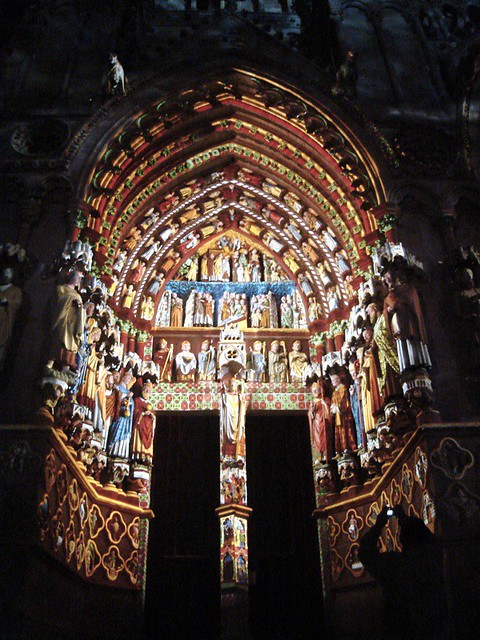Earlier this evening I attended the Mass in the Ordinariate use celebrated at Holy Rood here in Oxford. This was the first opportunity I have had to attend this liturgy, and the first time it had been celebrated in Oxford as a Missa cantata.
My first reaction to the liturgy was to see it as a reinvention of the English Missal - I understood a while ago there was hope that this might, at some future date, be authorised as an Extraordinary Form for the Ordinariate - and others commented afterwards on its resemblances to the Interim Rite of 1965. The source for those aspects doubtless is in Rome itself.
Looked at in these respects the Use should be seen in the context of the Reform of the Reform. It is centred on the Roman Canon, used elevated language and restores the prayers at the foot of altar, the last Gospel and threefold prayers with elements such as the "Lord I am not worthy..."
This was augmented by the liturgical style that former Anglo-Catholics have brought to the Ordinariate that serious concern to offer Mass worthily and with appropriate vesture - the maniple had reappeared on Fr Lloyd's wrist I noticed - and that very real concern, in my opinion, may well be the most important part of Anglican patrimony that the Ordinariate has to offer to the wider Church.
For these reasons I know it appeals to some cradle Catholics who like the return to greater dignity and a more traditional tone. It should on that basis appeal to a considerable number outside the formal; structure of the Ordinariate.
The use of familiar prayers and phrases from the pen of Cranmer did at times seem odd in an emphatically Catholic liturgy - you are somewhat surprised to suddenly have the Comfortable Words addressed to you in a Catholic Mass. Yes they were from Cranmer's better effort with scissors and paste in 1549 rather than 1552, and they certainly are in dignified English (as, of course, Cranmer consciously intended himself) but they can seem like odd interpolations in the adapted/restored Novus Ordo. At times the links seemed awkward, causing jerks in the tempo - yet the texts are, and have been approved as being, theologically eminently orthodox, and the phraseology is very much that of Transubstantiation.
The congregational Confession is before the Offertory - I suspect that most Anglo-Catholics have got used as I did to having that moved to the beginning of the service - and the use of the old General Confession sits a little oddly alongside the introductory prayers for the priest and servers, or if you interpolate yourself the traditional Confiteor immediately before Communion.
Those points made this is a dignified serious liturgy, accessible for former Anglicans and lifelong Catholics alike. It ought to attract, but I suspect many ex-Anglicans have probably become used to the latest version of the current Roman Missal, or have tended towards the Extraordinary Form. I suspect that the Use may prove to be maybe more important in the US or Australia with the Ordinariates there than it will in England.
For Catholics interested in the Reform of the Reform it is an important example, indeed proof of what can be achieved under the auspices of the Holy See. It is, in its significant points of obvious restoration, a heartening example of what can and will be permitted. In that sense it is a real tribute to Pope Benedict XVI's vision both for the liturgy and for the Ordinariates.
One friend, who had not been present, opined that Newman himself would not liked such a mixed rite, and that may indeed be true, but that is not the point about this newly authorised Use
It ought to be sampled by those interested in vernacular liturgical developments in the English speaking world, and judged on its own merits.
The Oxford group are intending to use the Use in Advent at least for the Sunday Vigil Mass - so if you are interested or intrigued come along to Holy Rood at 6pm on Saturdays and see for yourselves.





